Breast surgery is a type of surgical procedure performed on the breast. There are several types of breast surgeries, based on the patient's condition, need, and medical history.
Anatomy of the Breast
The breast is a tissue overlying the chest muscles in women. It is also known as mammary glands, which are a pair of glandular organs that are responsible to produce milk in response to the hormone changes of childbirth. These glands are made up of fatty tissue and are supported by ligaments and large muscles.
Each breast has 15-20 lobes which comprise the number of lobules and ducts supportive tissue. Each lobule has 30 major ducts that open onto the nipple. The darker region around the nipple is called the Areola. At the edge of the Areola, there are large glands that produce fluid to lubricate the nipple.
In each armpit, there are approximately 20-30 lymph nodes (glands) that drain fluid from the breast and form part of the lymphatic system which helps the body to fight against infection.
Benign Breast Diseases
The term “Benign Breast Disease” includes a heterogeneous group of lesions that may present various symptoms or may not be identified as incidental microscopic findings. The incidence of benign breast lesions begins to rise during the second decade of life and peaks within the fourth and fifth decades, as opposed to malignant diseases, for which the incidence continues to increase after menopause at a less speedy pace.
It is important to understand that benign breast disease which requires sequential steps are necessary to differentiate lesions that convey the high risk of subsequent breast cancer from those which do not.
Breast infections
A breast infection is a type of infection that occurs within the breast tissue. It is also known as mastitis. Staphylococcus aureus bacteria is the cause of most breast diseases, which is further causing staph infection.
1. Acute Mastitis is a bacterial infection that is seen commonly in the postpartum period. Bacteria occupy the breast through small erosions in a lactating woman's nipple and result in an abscess.
2. Breast Abscess is a localised collection of pus in the breast tissue, caused by a bacterial infection.
3. Chronic Mastitis is a type of infection which occurs in women who are not breastfeeding. In postmenopausal women, breast infections are related to chronic inflammation of the ducts below the nipple.
4. Hormonal changes in the body can cause the milk ducts to become clogged with dead skin cells and debris. These clogged ducts will make the breast more open to bacterial infection, which tends to return after antibiotics.
Risk Factors for Breast Cancer
Age, Early menstrual period, Genetics, Family history, Personal history of breast cancer, Personal history of certain non-cancerous breast diseases, Race ethnicity, Obese, Pregnancy history, dense breasts, Drinking alcohol, use of combination hormone therapy and previous treatment using radiation therapy.
29th June, 2019 : Sakra World Hospital, Bangalore has signed a MoU with Rotary Palmville, Bangalore today in the presence of The District Governor - Rotarian Suresh Hari S at a Rotary function. This is a joint social initiative by Sakra World Hospital which will conduct awareness camps, screening camps and provide treatment for breast cancer for the underprivileged women for free of cost. The camps will be conducted in rural parts of Bangalore, adjoining cities & villages in Karnataka and Tamil Nadu.
Speaking on the occasion, Mr Takashi Maki, MD Sakra World Hospital said " Today, breast cancer is the most common type of cancer among women in India as well as globally. However, if detected early, this type of cancer is almost completely curable. Unfortunately in India due to lack of awareness and early screening, more than 50% of the cases are detected late when it is already in stage 3 or 4 leading to high mortality rates. So as part of our CSR strategy, we wanted to hence focus on awareness building and early detection of breast cancer"
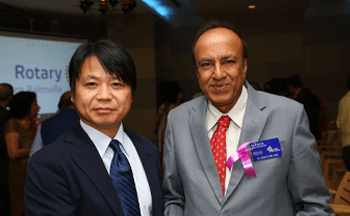
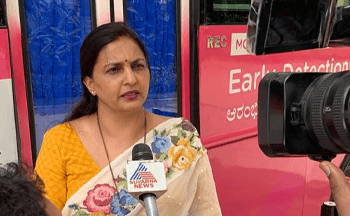
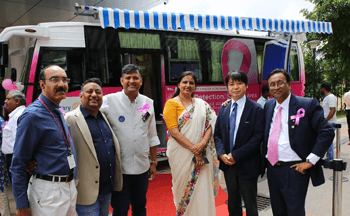
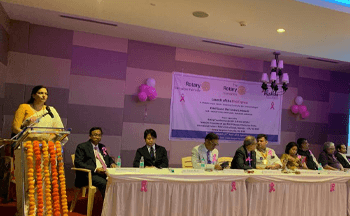
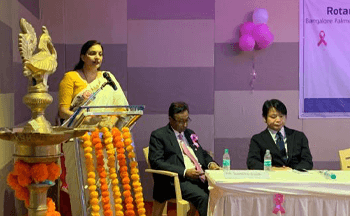
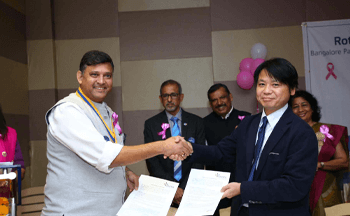
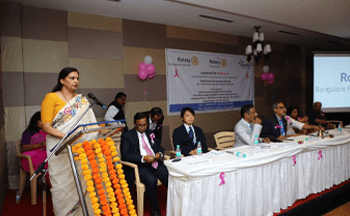
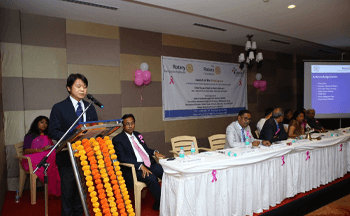
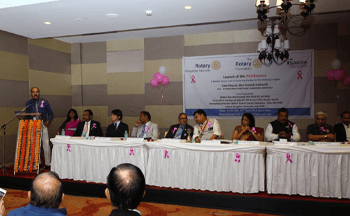
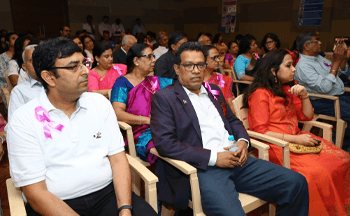
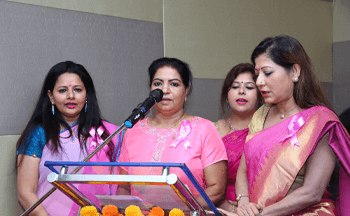
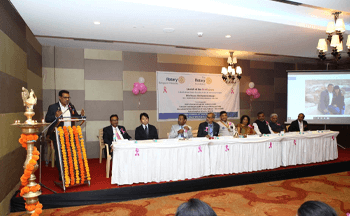
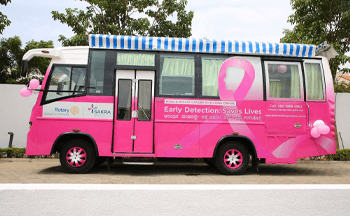
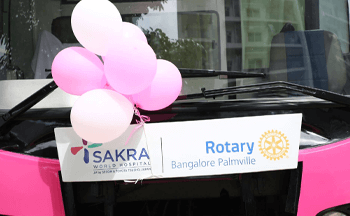

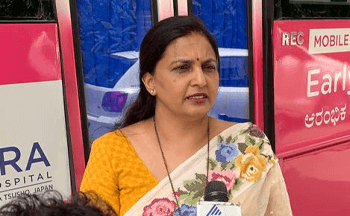
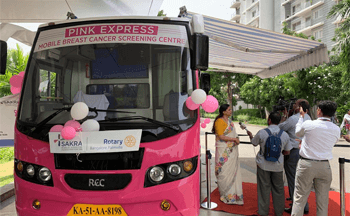
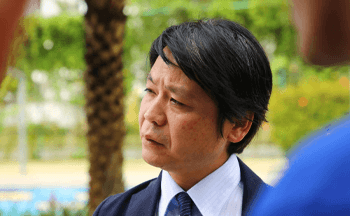
Enquire Now
Upon getting diagnosed, patients generally fear losing their life as they misunderstand all stages of breast cancer to be final. Another concern for breast cancer patients is whether they would have to give up their breasts to get rid of cancer. A simple answer to that is that it depends on which stage it is. In the early stages, the lump can be removed and the patient could undergo a whole plastic reconstructive surgery to make it look like a completely normal breast post the removal of the cancerous tumour.
The type of surgery is determined based on the stage of the tumour. Despite tumours and breasts of large sizes, a lumpectomy can be performed to remove advanced tumours as well. Most often, patients undergo breast conservation surgery. Empty spaces can be covered with new tissues and reconstructed to make it look like a normal breast again. Only in locally advanced tumours, mastectomy takes place by surgically removing the breast and sometimes nearby tissues.
Being a woman, the risk factors of breast cancer include ageing and also genetics. However, 85% of women get breast cancer due to environmental risk factors such as chemicals in the body, toxins, vitamin D deficiency and other factors that affect the strength of the immune system. Thus, leads to increased estrogen levels in the body are a high-risk factor for healthy cells in the body.
Ideally, all women of the age of 16 must screen themselves for breast cancer and also ultrasound test for the breast till the age of 40, any visible symptoms or not. Mammography only needs to be done if prescribed by a doctor unless you are above the age of 50.
The first option would be to get an immediate breast reconstruction surgery that is done at the same time as the mastectomy is done. The main advantage of this would be the relieving stress of not having a breast after the surgery and that it can be done in a single procedure. Another option would be to get a delayed reconstructive surgery after the surgery and chemotherapy radiation. In some cases, the patients want an implant-based reconstruction wherein a patient needs to go under radiation which makes it complicated to place implants directly. In this case, we use saline expanders which is a temporary reconstruction that maintains the shape of the breasts. This could be replaced with a silicone implant after the chemotherapy and radiation courses are completed.
In the early stages of cancer, only a part of the breast tissues are removed and the patient undergoes an oncoplastic reconstructive surgery to reshape the breasts. A whole breast reconstructive surgery could be done by 2 methods - one that involves implants and the other that involves infusion of the tissues from other parts of the patient's body to their breast. The first method is easy and has the shortest healing period, however, the second method is a more authentic procedure where no foreign components are added to the breasts.
Definitely no, as the implants are placed below muscle tissues and hence don’t come in direct contact with the breasts at all. However, it might be challenging to detect recurrence just through an ultrasound, an MRI must also be done.
Yes as it reduces the volume of the breast, however, the environmental risk factors persist despite the reduction of volume. Infections in the breasts are also one of the high-risk factors.
It is essential as breast cancer grows very slowly in women’s bodies and is harder to cure with chemotherapy in its advanced stages.